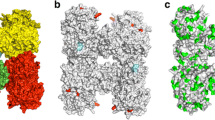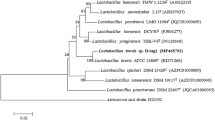Abstract
A recombinant l-arabinose isomerase from Enterococcus faecium DBFIQ E36 was immobilized onto multifunctional epoxide supports by chemical adsorption and onto a chelate-activated support via polyhistidine-tag, located on the N-terminal (N-His-L-AI) or on the C-terminal (C-His-L-AI) sequence, followed by covalent bonding between the enzyme and the support. The results were compared to reversible L-AI immobilization by adsorption onto charged agarose supports with improved stability. All the derivatives presented immobilization yields of above 75%. The ionic interaction established between agarose gels containing monoaminoethyl-N-aminoethyl structures (MANAE) and the enzyme was the most suitable strategy for L-AI immobilization in comparison to the chelate-activated agarose. In addition, the immobilized biocatalysts by ionic interaction in MANAE showed to be the most stable, retaining up to 100% of enzyme activity for 60 min at 60 °C and with Km values of 28 and 218 mM for MANAE-N-His-L-AI and MANAE-C-His-L-AI, respectively.





Similar content being viewed by others
References
Hong, Y. H., Lee, D. W., Lee, S. J., Choe, E. A., Kim, S. B., Lee, Y. H., Cheigh, C. I., & Pyun, Y. R. (2007). Production of d-tagatose at high temperatures using immobilized escherichia coli cells expressing L-arabinose isomerase from Thermotoga neapolitana. Biotechnology Letters, 29(4), 569–574.
Levin, G. V., Zehner, L. R., Saunders, J. P., & Beadle, J. R. (1995). Sugar substitutes: their energy values, bulk characteristics, and potential health benefits. The American Journal of Clinical Nutrition, 62(5), 1161S–1168S.
Livesey, G., & Brown, J. C. (1996). D-Tagatose is a bulk sweetener with zero energy determined in rats. The Journal of Nutrition, 126(6), 1601–1609.
Beadle, J. R., Saunder, J. P., & Wajada, T. J. (1992). Process for manufacturing tagatose. US Patent 5,078,796.
Oh, D. K. (2007). Tagatose: properties, applications, and biotechnological processes. Applied Microbiology and Biotechnology, 76(1), 1–8.
Illanes, A., Guerrero, C., Vera, C. Wilson, L., Conejeros, R., Scott, F. (2016). Lactose-derived prebiotics: a process perspective. 1st Ed., San Diego: Academic Press. https://doi.org/10.1016/C2014-0-03393-X.
Oh, D. K., Kim, H. J., Ryu, S. A., Rho, H. J., & Ki, P. (2001). Development of an immobilization method of L-arabinose isomerase for industrial production of tagatose. Biotechnology Letters, 23(22), 1859–1862.
Kim, H. J., Ryu, S. A., Kim, P., & Oh, D. K. (2003). A feasible enzymatic process for D-tagatose production by an immobilized thermostable L-arabinose isomerase in a packed-bed bioreactor. Biotechnology Progress, 19(2), 400–404.
Ryu, S. A., Kim, C. S., Kim, H. J., Baek, D. H., & Oh, D. K. (2003). Continuous D-tagatose production by immobilized thermostable L-arabinose isomerase in a packed-bed bioreactor. Biotechnology Progress, 19(6), 1643–1647.
Jung, E. S., Kim, H. J., & Oh, D. K. (2005). Tagatose production by immobilized recombinant Escherichia coli cells containing Geobacillus stearothermophilus L-arabinose isomerase mutant in a packed-bed bioreactor. Biotechnology Progress, 21(4), 1335–1340.
Rhimi, M., Messaoud, E. B., Borgi, M. A., khadra, K. B., & Bejar, S. (2007). Co-expression of l-arabinose isomerase and d-glucose isomerase in E. coli and development of an efficient process producing simultaneously d-tagatose and d-fructose. Enzyme and Microbial Technology, 40(6), 1531–1537.
Pessela, B. C. C., Vian, A., Mateo, C., Lafuente, R., García, J. L., Guisan, J. M., & Carrascosa, A. V. (2003). Overproduction of Thermus sp. strain T2 B-galactosidase in Escherichia coli and preparation by using tailor-made metal chelate supports. Applied and Environmental Microbiology, 69(4), 1967–1972.
Guisán, J. M. (1988). Aldehyde-agarose gels as activated supports for immobilization-stabilization of enzyme. Enzyme and Microbial Technology, 10(6), 375–382.
Mateo, C., Grazú, V., Palomo, J. M., López-Gallego, F., Fernández-Lafuente, R., & Guisán, J. M. (2007). Immobilization of enzymes on heterofunctional epoxy supports. Nature, 2, 1022–1033.
Fernández-Lorente, G., Lopez-Gallego, F., Bolivar, J. M., Rocha-Martin, J., Perez, S. M., & Guisán, J. M. (2015). Immobilization of proteins on highly activated glyoxyl supports: dramatic increase of the enzyme stability via multipoint immobilization on pre-existing carriers. Current Organic Chemistry, 19(17), 1719–1731.
Bolívar, J. M., Rocha-Martin, J., Godoy, C., Rodrigues, R. C., & Guisán, J. M. (2010). Complete reactivation of immobilized derivatives of a trimeric glutamate dehydrogenase from Thermus thermophillus. Process Biochemistry, 45(1), 107–113.
Mateo, C., Bolivar, J. M., Godoy, C. A., Rocha-Martin, J., Pessela, B. C., Curiel, J. A., Munoz, R., Guisan, J. M., & Fernandez-Lorete, G. (2010). Improvement of enzyme properties with a two-step immobilization process on novel heterofunctional supports. Biomacromolecules, 11(11), 3112–3117.
Manzo, R. M., de Sousa, M., Fenoglio, C. L., Gonçalves, L. R. B., & Mammarella, E. J. (2015). Chemical improvement of chitosan modified beads for the immobilization of Enterococcus faecium DBFIQ E36 L arabinose isomerase through multipoint covalent attachment approach. Journal of Industrial Microbiology & Biotechnology, 42(10), 1325–1340.
Armisén, P., Mateo, C., Cortés, E., Barredo, J. L., Salto, F., Diez, B., Rodés, L., García, J. L., Fernández-Lafuente, R., & Guisan, J. M. (1999). Selective adsorption of poly-His tagged glutaryl acyiase on tailor-made metal chelate supports. Journal of Chromatography. A, 848(1-2), 61–70.
Hernaiz, M. J., & Crout, D. H. G. (2000). Immobilization-stabilization on Eupergit C of the‚ β-galatosidase from B. circulans and an β-galactosidase from A. oryzae. Enzyme and Microbial Technology, 27(1-2), 26–32.
Katchalski-Katzir, E., & Kraemer, D. (2000). Eupergit C, a carrier for immobilization of enzymes of industrial potential. Journal of Molecular Catalysis B: Enzymatic, 10(1-3), 157–176.
Mateo, C., Femández-Lorente, G., Benevides, C. C. P., Vían, A., Carrascosa, A. V., García, J. L., Fernández-Lafuente, R., & Guisan, J. M. (2001). Affinity chomatography of polyfíistidine tagged enzimes. New dextran-coated immobilized metal ion affinity chromatography matrices for prevention of undesired multipoint adsorptions. Journal of Chromatography A, 915(1-2), 97–106.
Mateo, C., Femández-Lorente, G., Abian, O., Fernández-Lafuente, R., & Guisan, J. M. (2000a). Multifunctionai Epoxi Suports. A new tool to improve the covalent immobiiization of proteins. The promotion of physical adsorptions of proteins on the supports before theírcovalent linkage. Biomacromoleculas, 1(4), 739–745.
Sousa, M., Manzo, R. M., García, J. L., Mammarella, E. J., Gonçalves, L. R. B., & Pessela, B. C. (2017). Engineering the L-arabinose isomerase from Enterococcus Faecium for D-tagatose synthesis. Molecules, 22(12), 2164.
Fernández-Lafuente, R., Rossell, C. M., Rodríguez, V., Santana, C., Soler, G., Bastida, A., & Guisan, J. M. (1993). Preparation of activated supports containing low pK amino groups. A new tool or protein immobilization via the carboxyl coupling method. Enzyme and Microbial Technology, 15(7), 546–550.
Bradford, M. M. (1976). A rapid and sensitive method for the quantitation of microgram quantities of protein utilizing the principle of protein-dye binding. Analytical Biochemistry, 72(1-2), 248–254.
Dische, Z., & Borenfreund, E. (1951). A new spectrophotometric method for the detection and determination of keto sugars and trioses. The Journal of Biological Chemistry, 192, 583–587.
Hung, X. G., Tseng, W. C., Liu, S. M., Tzou, W. S., & Fang, T. Y. (2014). Characterization of a thermophilic L-arabinose isomerase from Thermoanaerobacterium saccharolyticum NTOU1. Biochemical Engineering Journal, 83, 121–128.
Guisan, J. M. (2006). Immobilization of enzymes and cells. Methods in biotechnology (Vol. 22). Totowa: Humana Press.
Laemmli, U. K. (1970). Cleavage of structural protein during the assembly of the heat of bacteriophage T4. Nature, 227(5259), 680–685.
Silva, J. A., Macedo, G. P., Rodrigues, D. S., Giordano, R. L. C., & Gonçalves, L. R. B. (2012). Immobilization of Candida antarctica lipase B by covalente attachment on chitosan-based hydrogels using diferente support activation strategies. Biochemical Engineering Journal, 60, 16–24.
Illanes, A. (2008). Enzyme biocatalysis: principles and applications. Netherlands: Springer.
Cheng, L. F., Mu, W. M., Zhang, T., & Jiang, B. (2010). Na L-arabinose isomerase from Acidothermus cellulolytics ATCC 43068: cloning, expression, purification, and characterization. Applied Microbiology and Biotechnology, 86(4), 1089–1097.
Rhimi, M., Ilhammami, R., Bajic, G., Boudebbouze, S., Maguin, E., Haser, R., & Aghajari, N. (2010). The acid tolerant L-arabinose isomerase from the food grade Lactobacillus sakei 23 K is an attractive D-tagatose producer. Bioresource Technology, 101(23), 9171–9177.
Lee, S. J., Lee, D. W., Choe, E. A., Hong, Y. H., Kim, S. B., Kim, B. C., & Pyun, Y. R. (2005). Characterization of a thermoacidophilic L-arabinose isomerase from Alicyclobacillus acidocaldarius: role of Lys-269 in pH optimum. Applied and Environmental Microbiology, 71(12), 7888–7896.
Mateo, C., Abian, O., Lafuente, R., & Guisan, J. M. (2000b). Reversible enzyme immobilization via a very strong and nondistorting ionic adsorption on support–polyethylenimine composites. Biotechnology and Bioengineering, 68(1), 98–105.
Fernández-Lafuente, R., Rodríguez, V., Mateo, C., Penzol, G., Hernández-Justiz, O., Irazoqui, G., Villaríno, A., Ovsejevi, K., Francisco, B., & Guisan, J. M. (1999). Stabilization of multimeric enzymes via immobilization and post-immobilization techniques. Journal of Molecular Catalysis B: Enzymatic, 7(1-4), 181–189.
Cardoso, C. L., de Moraes, M. C., & Cass, Q. B. (2009). Imobilização de enzimas em suportes cromatográficos: uma ferramenta na busca por substâncias bioativas. Quimica Nova, 32(1), 175–187.
Pessela, B. C. C. (2002). Ingeniería de Biocatalizadores y Bioprocesos: β-Galactosidasa de Thermus sp., Cepa T2. PhD Thesis. Universidad Politécnica de Madrid, Espanha.
Pisan, F. M., Relia, C. A., Raya, C., Rozzo, R., Nucci, A., Gambacorta, M., Rosa, D., & Rossi, M. (1990). Thermostable p-galactosidase from archaebactrium Solfulobus solfatarius. Purification and properties. European Journal of Biochemistry, 187(2), 321–328.
Coolbear, T., Daniel, R. M., & Morgan, H. W. (1992). The enzymes from extreme thermophiles: bacterial source, thermostabilities and industrial relevance. Advances in Biochemical Engineering / Biotechnology, 45, 58–98.
da Silva, E. S., Gómez-Vallejo, V., & López-Gallego, F. (2015). Efficient nitrogen-13 radiochemistry catalyzed by a highly stable immobilized biocatalyst. Catalysis Science & Technology, 5(5), 2705–2713.
Silva, T. M., Pessela, B. C., Silva, J. C. R., Lima, M. S., Jorge, J. A., Guisán, J. M., & Polizeli, M. L. T. M. (2014). Immobilization and high stability of an extracellular β-glucosidase from Aspergillus japonicus by ionic interactions. Journal of Molecular Catalysis B: Enzymatic, 104, 95–100.
Mateo, C., Palomo, J. M., Fuentes, M., Betancor, L., Grazu, V., López-Gallego, F., Pessela, B. C. C., Hidalgo, A., Fernández-Lorente, G., Fernández-Lafuente, R., & Guisán, J. M. (2006). Glyoxyl agarose: a fully inert and hydrophilic support for immobilization and high stabilization of proteins. Enzyme and Microbial Technology, 39(2), 274–280.
Blanco, R. M., Calvete, J. J., & Guisan, J. M. (1989). Immobilization e stabilization of enzymes. Variables that control the intensity of the trypsin (amine)-agarose (aldehyde) multi-point covalent attachment. Enzyme and Microbial Technology, 11(6), 353–359.
Funding
This study received financial support from the Brazilian Research Agencies CAPES, CNPq, and FUNCAP. This work was partially sponsored by funds from the project Argentina–Brazil Bilateral Cooperation Program BR/12/06 MINCyT-CAPES 2012 (Buenos Aires, Argentina).
Author information
Authors and Affiliations
Corresponding authors
Ethics declarations
Conflict of Interest
The authors declare that there is no conflict of interest.
Rights and permissions
About this article
Cite this article
de Sousa, M., Melo, V.M.M., Hissa, D.C. et al. One-Step Immobilization and Stabilization of a Recombinant Enterococcus faecium DBFIQ E36 l-Arabinose Isomerase for d-Tagatose Synthesis. Appl Biochem Biotechnol 188, 310–325 (2019). https://doi.org/10.1007/s12010-018-2905-1
Received:
Accepted:
Published:
Issue Date:
DOI: https://doi.org/10.1007/s12010-018-2905-1




